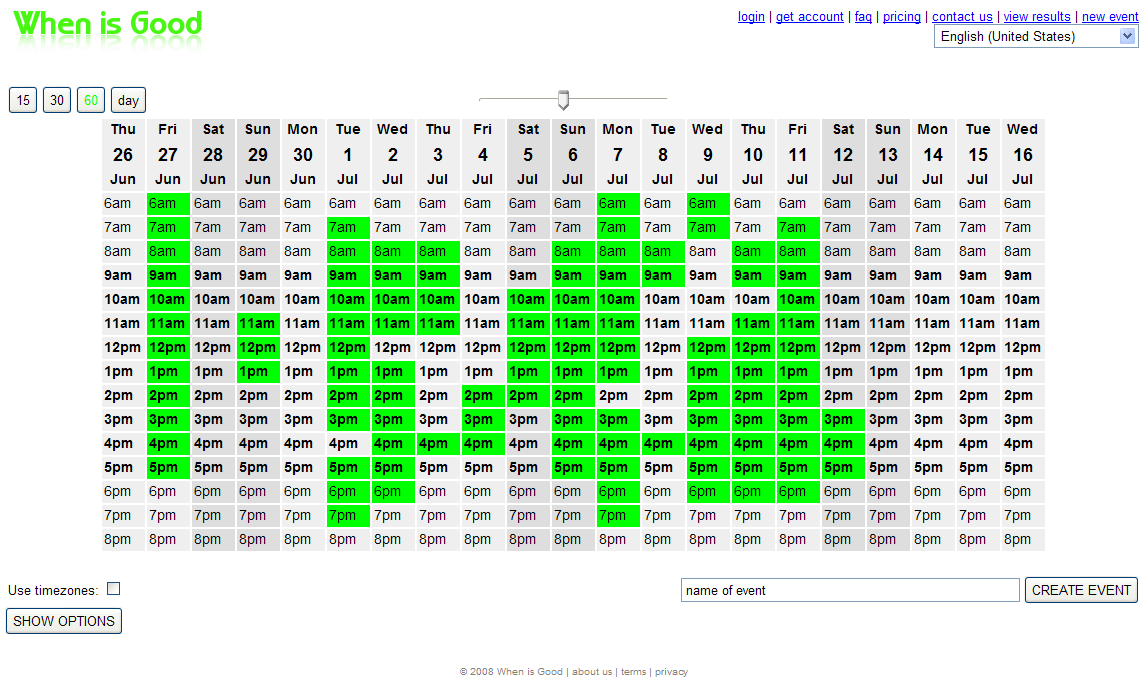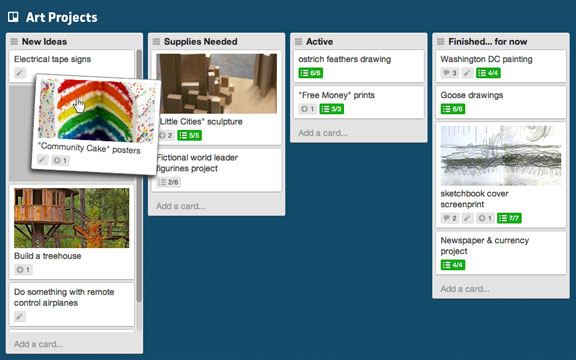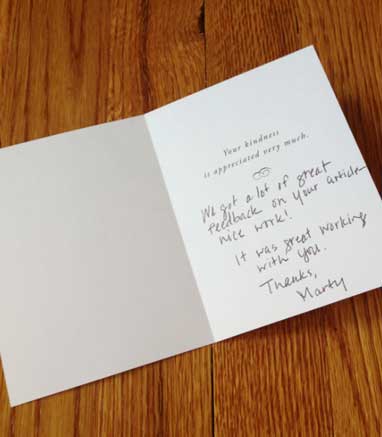The relationship between entrepreneurs and their freelance help is a unique one—think of it as a kitchen experiment. By subtracting the traditional in-office relationship, adding in electronic communication, and sprinkling in a dash of different perspectives, you can create a great product if you use the right tools along the way.
As a full-time freelancer myself, I’ve learned some tips and tricks to make these relationships successful. I’ve gathered my seven secret tools that can make life simpler, less confusing, and more efficient for both the entrepreneur and the hired freelancer.
Here goes!
1. Be Fair
Paying fairly for the work you’ve requested is directly related to the quality of work you receive. Based on your freelancer’s years of experience, the size of the project, and the scope of the workload, the rates may vary. Be prepared to pay a premium price for talented freelancers. It's ok to negotiate a budget that fits within the requirements of from both parties.
Not sure what to pay? I recommend sending your project out to a few different freelancers and getting quotes from them all. That'll give you a good idea of what prices make sense. You can also check out going rates on freelance sites.
Be fair about timelines, too. Think about your timeline for the project and be realistic about deadlines. Factor in time for research, interviews, brainstorming—don’t over or under promise. Before setting a due date, discuss all of the different pieces that need to fall into place for completion.
2. Ask the Right Questions
Before the project begins, ask important questions that go beyond the surface level. This will help ensure the freelancer is a good fit with you and your business. These questions will help you understand the freelancer's background to see if they can take on the project.
Here are a few questions that can help navigate this part of the process:
-
What industries do you specialize in?
-
What do your revision cycles look like?
-
Can I see some samples of your work?
-
How do you do research for a new project?
-
Do you have any references?
-
What's your turn-around time for a project of this size?
3. Be Clear
Since you and your freelancer don’t share a workspace, you sometimes miss out on the advantages of being able to pop around the corner and ask, “Hey, is this what you meant?”
From the very beginning, it’s important to give very clear, concise directions and deadlines, especially if it’s the first time you’ve worked with a particular person. And don’t only be clear in the beginning—check in along the way, too.
For example, if you want a logo designed, don’t just say “go ahead and design my logo.” Instead, think carefully about what you want. Do you care about color? Do you envision a certain style? Send freelancers examples of work that you like to make it clear as Crater Lake.
Checking your progress often and keeping the communication flowing will make sure you’re both on the same page. You can also share reference photos and examples of similar work with tools like Google Drive to help see updates in real-time.
Basically, clarity leads to work that meets (and hopefully exceeds) expectations.
4. Set Expectations
Budget, timeframe, word count, style and tone—these all need to be outlined at the front-end of any assignment. Eliminate all assumptions and start from scratch with each new task.If you're clear about what you expect, the freelancer will give you better results.
It helps to spec out the project in a word document and have a go-to form to send freelancers. For example, when Grasshopper asked me to write this blog post, I used their Editorial Guidelines to make sure the post fit with the rest of the blog and jived with the brand.
You can also create formal contracts with freelancers. What should you include? Due dates, project guidelines, revisions expectations, and compensation. A written and signed contract ensures that both you and the freelancer are on the same page with your expectations. Sites like Elance and Guru have escrow and contract functionality already built in.
5. Coordinate Your Schedules
While you may be time zones apart or simply have different working hours, it’s key that you coordinate a schedule conducive to collaboration. Sometimes it means each party has to give a little to make it work—but it is possible.
One of my most favorite no-frills tools for coordinating meetings with clients is whenisgood.net. The grid setup allows you to select possible dates and times for a proposed meeting and lets invitees choose times that will also work with their schedules. It then selects the optimal time from all submissions and generates your perfect meeting time. Voila!

6. Communicate Your Heart Out
Since you probably don’t have an in-office relationship with your freelance help, it’s important both parties communicate on a regular basis. Whatever form it takes—emails, calls, video conferencing—don’t let this one fall through the cracks.
Tools like Trello and Evernote can help manage your collaborative efforts and make sure both parties stay on schedule (and both have excellent mobile components!)
Trello allows users to make notes and organize project components in a flashcard style setup with drag-and-drop features that make for quick adjustments. A lot of designers and developers use Trello, but it's increasingly popular with marketing and editorial teams, too.

Evernote offers the advantage of tools such as the web clipper for storing and organizing articles and other reference materials.
Both Trello and Evernote are fantastic alternatives to a messy desk and lost notecards.
When it comes to project management, Basecamp and Mavenlink are great tools for everything from document and image sharing to complete project oversight. With different pricing structures come different features, but even the free versions will help navigate your process. These two are my go-to resources for seeing large collaborative efforts executed efficiently.

7. Say Thanks
A while ago, I was hired to write a post for a business blog through a connection I had with the blog owner. We made our introductions, the post was edited and finished, and we were both pleased with the end result.
A week later, I received a hand-written thank you note from the blog owner for the simple purpose of expressing gratitude. He wrote, “We got a lot of great feedback on your article—nice work! It was great working with you.” That simple act of kindness not only enhanced our working experience, but added value to the relationship. It made me want to work with him again.

Communication is Key
If you take these seven tools and use them with your freelance help, I think you’ll be pleased with the end product. The number one thing to remember: Communication is king. Communication is the glue to these unique relationships—and there are excellent tools available to help keep the feedback flowing. Make them work for you!
Your Turn: Freelancers and entrepreneurs, weigh in! What do you use to make your freelance partnerships run smoothly?


